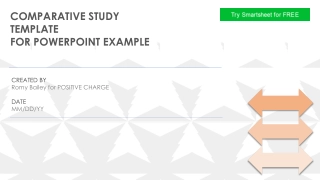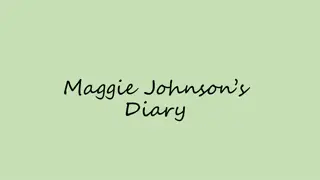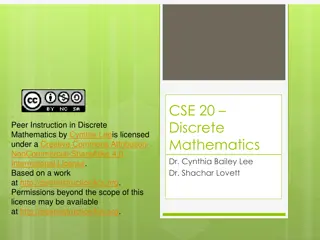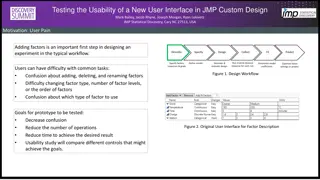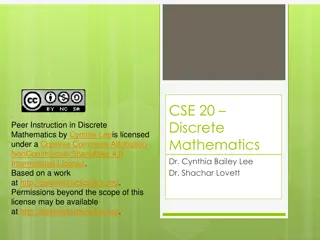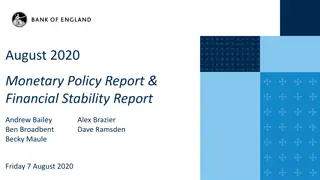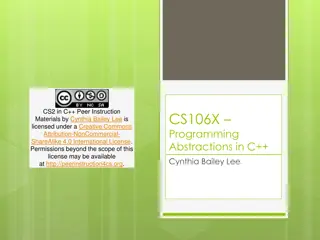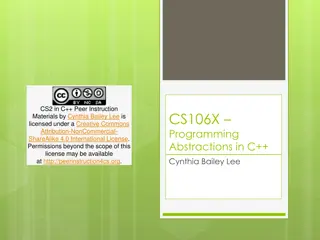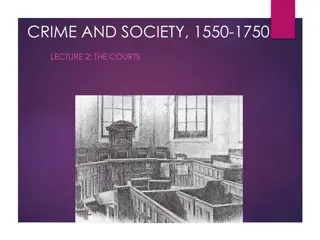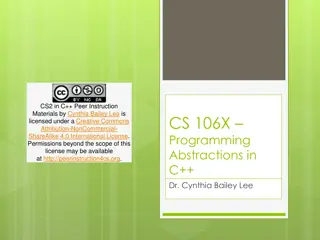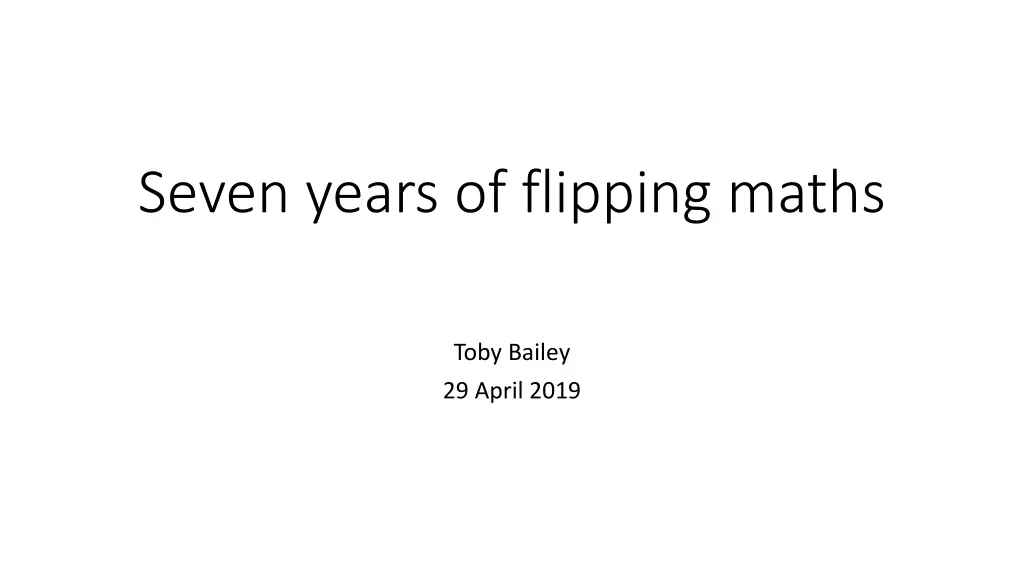
Innovations in Education: Transforming Teaching Methods Over Time
Explore the evolution of teaching methods in education over the years, from traditional classrooms to flipped classrooms. Discover the challenges faced, solutions implemented, and the shift towards active learning and evidence-based practices.
Download Presentation

Please find below an Image/Link to download the presentation.
The content on the website is provided AS IS for your information and personal use only. It may not be sold, licensed, or shared on other websites without obtaining consent from the author. If you encounter any issues during the download, it is possible that the publisher has removed the file from their server.
You are allowed to download the files provided on this website for personal or commercial use, subject to the condition that they are used lawfully. All files are the property of their respective owners.
The content on the website is provided AS IS for your information and personal use only. It may not be sold, licensed, or shared on other websites without obtaining consent from the author.
E N D
Presentation Transcript
Seven years of flipping maths Toby Bailey 29 April 2019
In 2009 I became Director of Teaching Around 40-45 academic staff Entry of around 80 UG Very few academics with any theoretical knowledge of education. Fowler on split infinitives: The English- speaking world can be divided into: 1. Those who neither know nor care 2. Those who do not know, but care very much 3. Those who know and condemn 4. Those who know and approve 5. Those who know and distinguish
Where are we now? Around 90 academic staff entry of 200 UG and 180ish MSc Growing education theme of teaching-focussed academics: Chair in TESE; lecturer in TEME; 3 x 0.5 + 0.2 academics; 2 x Student Learning Advisors ; three others Five University Teachers Graduate student Flipped classrooms in Year 1, becoming more common in later years Many instances of evidence-based innovation: mastery / specification grading, exit cards, quizzing (aimed at retrieval practice and spacing), two- stage assessment, Online assessment: originally Maple TA, now Stack, used widely in early years particularly A student culture of learning by cooperative working and active engagement
The traditional classroom (Ideal) Process Problems Some/many students don t do the reading. Unless they are up-to-date, useful reading may be impossible. Multitask while taking notes? Do students understand what we say? Attention wanders. How well can students work on understanding without guidance? Students prepare by reading previous/coming material. Students work hard to understand the material as it is delivered. Ditto last point above. Exercises for no credit often ignored Exercises for (even small) credit done with Google, finding last year s solutions, excessive help, After lectures, students consolidate/deepen learning by independent study
The flipped classroom Problems Solutions Some/many students don t do the reading. Unless they are up-to-date, useful reading may be impossible. Multitask while taking notes at the same time? Attention wanders. How well can students work on understanding without guidance? Low stakes quiz on reading before class. Students more up-to-date so (straightforward, preparatory) reading is possible. Devote much of class time to active learning exercises. 5-10 mins max of exposition interleaved with active learning keeps attention. Ditto last point above. Exercises for no credit often ignored Exercises for (even small) credit done with Google, finding last year s solutions, excessive help, Students have made a start on understanding (the hard part) in class. We still struggle with this. This view owes much to Robert Talbert s Flipped Learning: A Guide for Higher Education Faculty
Active learning in large maths lectures Eric Mazur s Peer Instruction (Crouch & Mazur 2001) is a good base: 1. Mini-lecture reminding students of a topic from their preparatory study 2. Pose conceptual MCQ students think individually and answer 3. Do NOT release results and have several minutes of turn to your neighbour and discuss. 4. Vote again. 5. Show results and sum up correct (and incorrect) answers. PI (and interactive engagement generally well supported by evidence. My view is that 10 minutes of lecturing is replaced by a 3 minute intro, 4 minutes of students thinking and discussing and 3 more minutes of teaching where the class really want to know the answer.
The lecture system in teaching science R.T. Morrison Undergrad education in Chem and Phys (1985) You assign the students portions of the textbook to study before they come to class. You don t waste your time doing what Frank Lambert calls `presenting a boardful of elegantly organized material with beautiful answers to questions that the students have not asked The students have read the material, they have thought about it, and they have questions to ask about it. You answer these questions, or, better still, try to get them to answer their own questions, or get other students to give the answers. You ask questions. You have a discussion. The entire class hour becomes like those few golden moments at the end of an old-fashioned lecture when a few students manage to rise above the system and gather around your desk.
Example Ecosystem M2 Probability Course notes divided into weeks. Each week has an initial section students are expected to study in advance. (Talbert-style Preassessment ) Monday: online test (Stack) on that reading and some material from last and earlier weeks. One attempt at quiz by Monday. Identical(ish) quiz open Tues Friday three attempts best counts. Final mark max( first, (first+2 second)/3) Lectures (2 pw): Mainly Peer Instruction Mid-term exam: two-stage test (in a single lecture period). Three hand-ins of 2 questions marked on EMRN rubric with resubmission. See Specification grading by Linda Nilson Learning quiz at start of course. Results in Final Exam (80% of course) embarrassingly high this year.
Flipping, PI and the science of learning Answering questions (without notes) is retrieval practice. Initial vote in PI even if wrong may enhance learning. (For benefits of initial failed retrieval attempts see Kornell et al, 2009) Live working in class probably induces more retrieval than homework (where facts may be looked up). Structure of regular quizzing easily accommodates spaced practice. Conceptual PI questions (can) encourage elaborative thinking.
What have we learnt? If the idea is explained enough and consistent enough, students buy in. We are teaching at least as challenging material in early years with results that are at least as good. The flipped environment leads to students being more communicative and engaged at the time and in following years. Our NSS results showed a significant and sustained improvement with the first cohort that was flipped in Year 1.

